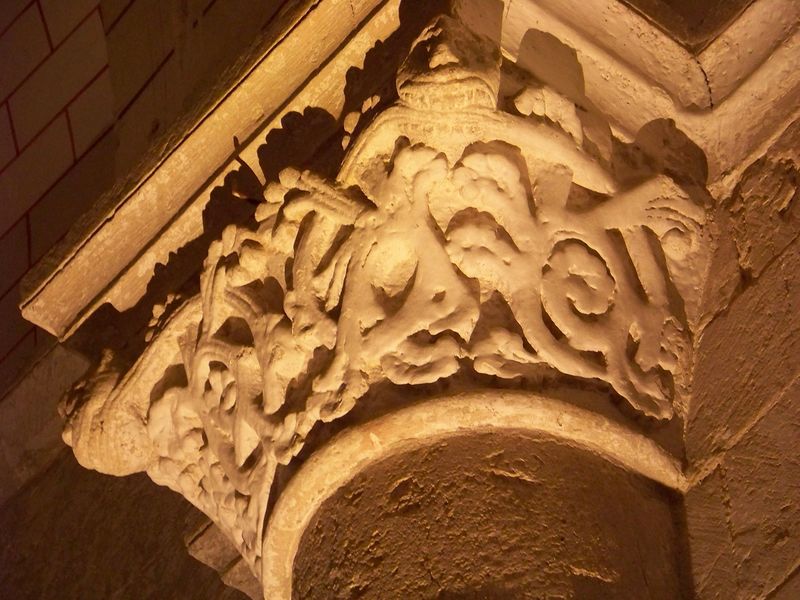Romanesque building built in the XNUMXth and XNUMXth centuries, it replaces a first church, considered too modest and consists of a nave with side aisles, followed by a transept with apsidioles and an apse.
This church was initially fortified. Later repairs caused the system of fortifications to disappear. Looking at the choir from the outside (from the road that leads to the village hall), we can clearly see a difference in the construction of the wall. Up to a certain level, it is made up of large, well-cut stones. Above, a blocking wall replaces the old covered way and the fortifications.
The initial facade underwent a very dry restoration of the XNUMXth century and it is the other end of the building, with the levels of the built masses (which constitute the bell tower, its staircase turret, the rounded volumes of the apses and apsidioles ) that shows the most seductive character. This being the main interest lies in the interior of the building, with the archaism of the ribbed vaults, the aisles or the cupola on squinches of the square of the bell tower.
Thanks to this church, one can try to understand some characteristics of Romanesque art by circulating in the church. You can see several types of vaults: the barrel vault (with a vault drawing a perfect semi-circle), the broken vault (with a broken semi-circle in its center) and the ribbed vault (with the vault supported by intersecting broken arches). This shows that the church was made in several stages and benefited from the appearance of new techniques.
There remains a series of remarkable capitals, also characteristic of Romanesque art. Whether they are with stylized flowers and animals (ancient and oriental influences), whether they represent animals, whether they evoke scholarly allegories, scenes of daily life, representations of trades or even religious scenes intended for the instruction of the faithful, all deserve the most attentive examination.
To teach believers the precepts of the holy scriptures, to convince them of the combat engaged by the forces of evil (often represented by monstrous animals) against the forces of good and to persuade them to obey the church and its commandments, the clergy used, among other things, very significant, even frightening sculptures.
Church of the Transfiguration of Saint Sauveur d'Aunis: registration Historic Monument by decree of February 27, 1925
- Pet Friendly
Not disclosed
Spoken languages


